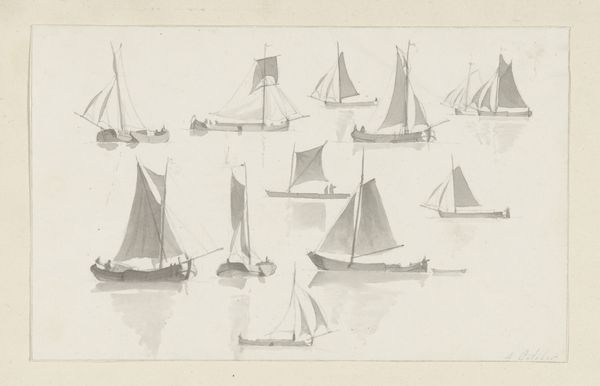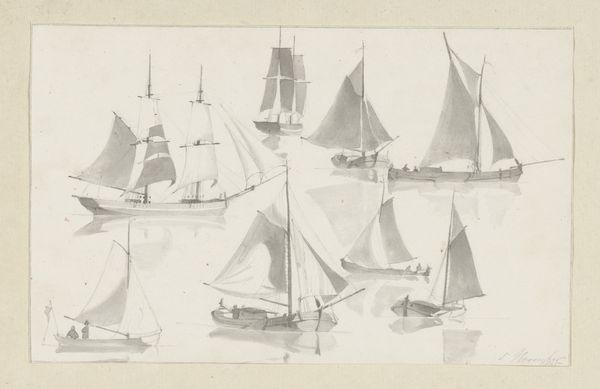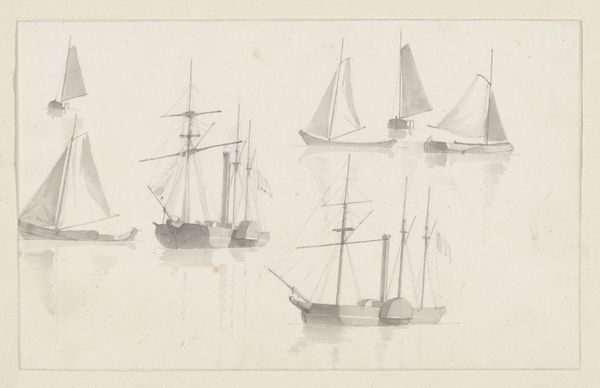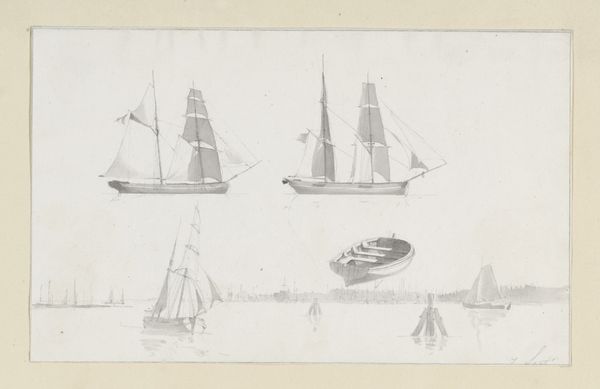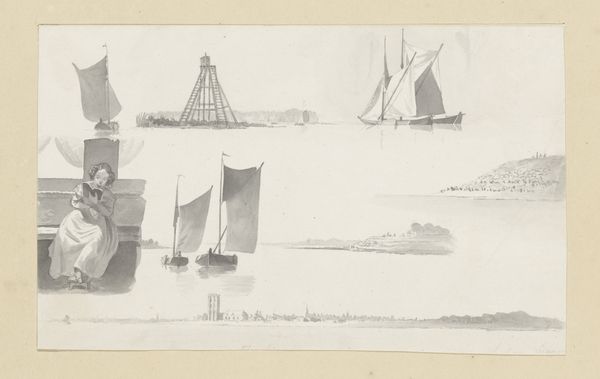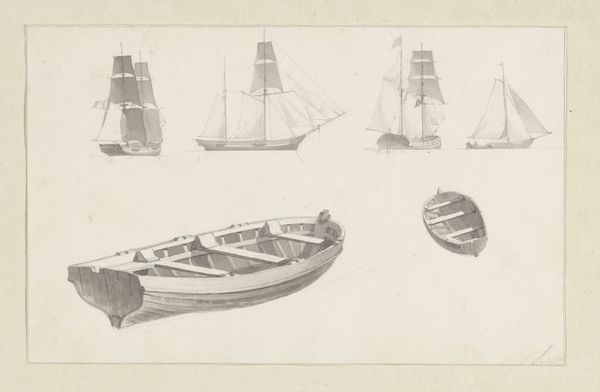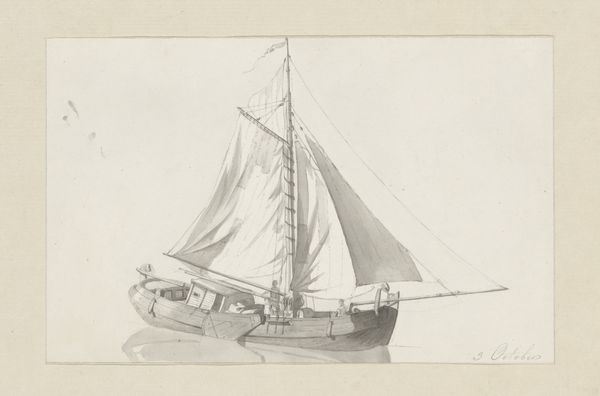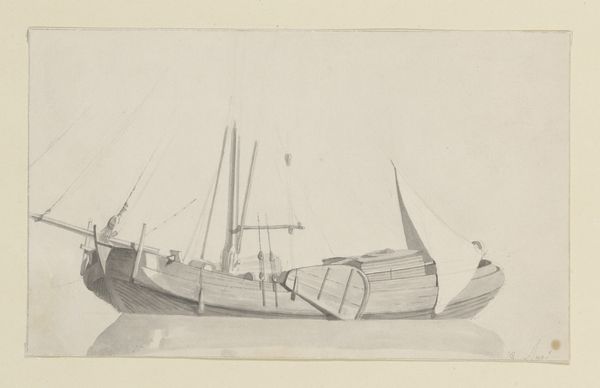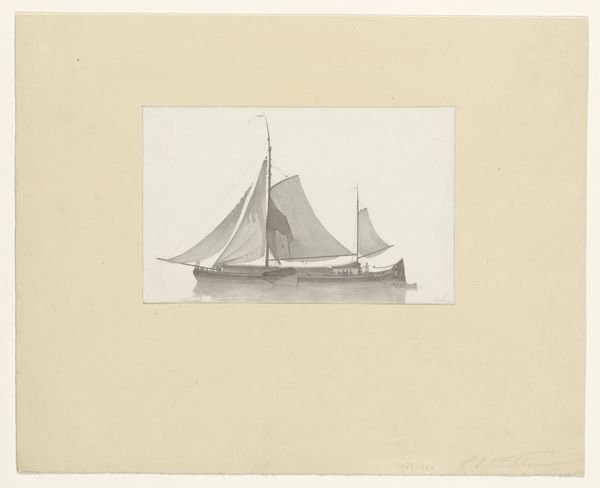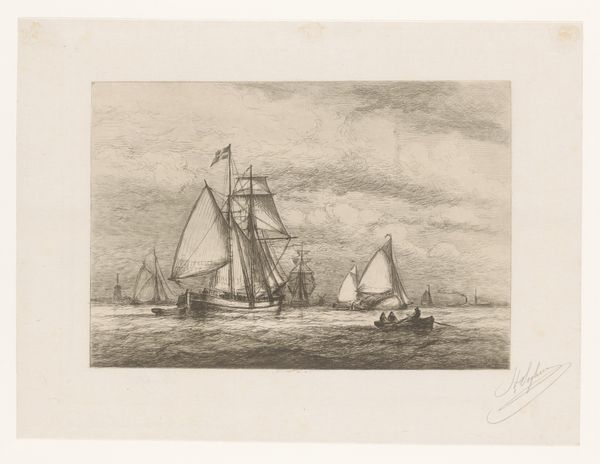
drawing, paper, pencil
#
drawing
#
comic strip sketch
#
aged paper
#
light pencil work
#
pencil sketch
#
landscape
#
paper
#
personal sketchbook
#
idea generation sketch
#
sketchwork
#
pencil
#
sketchbook drawing
#
pencil work
#
storyboard and sketchbook work
#
realism
Dimensions: height 120 mm, width 175 mm
Copyright: Rijks Museum: Open Domain
Curator: This is Hendrik Abraham Klinkhamer's "Sketch sheet with sailing vessels," dating from 1820 to 1872 and held here at the Rijksmuseum. It’s a pencil drawing on paper. Editor: It feels like a quick study, a flurry of ideas captured on a single sheet. A nautical notepad, if you will. Curator: Exactly. As a study piece, its materiality speaks volumes. Consider the paper itself; its age is visible. The pencil marks are delicate, almost tentative. What was the social context for such an item? Were these potential commissions? Personal sketches? Editor: Likely, these are from a personal sketchbook used for idea generation. It begs the question of how these sketches were originally bound and circulated, if at all, or how it played a part of workshop practices. It's interesting to consider how the sketches function independently of any finished work—are they meant for an audience at all? Curator: Precisely. And thinking about its creation: pencil was becoming increasingly available during Klinkhamer's time. How does wider access to certain technologies affect the style of artistic creation and consumption? Editor: And what social messages can we derive? The presence of numerous sailing vessels highlights the importance of maritime power and trade in 19th-century Netherlands. Who were these boats for? Merchant endeavors? Pleasure cruises? Curator: Furthermore, the variation in the vessels – their rigging, size – potentially speaks to Klinkhamer's keen observation of different modes of seafaring transport and activity. His intent appears to be documentation over expression. Editor: Still, the grouping itself forms a powerful statement of Dutch maritime ambition. Perhaps more subtle than an official state commission, but equally resonant as part of an individual’s broader artistic practice. I’m struck by how unpretentious it seems compared to many of the finished canvases hanging in nearby galleries, while, it speaks with greater authenticity and vulnerability in its material evidence. Curator: Ultimately, looking at this sketch underscores how the study of artistic output extends beyond purely aesthetic assessment. Editor: It leaves one wondering how public accessibility and display can affect this piece and its intended role or the role now granted to it.
Comments
No comments
Be the first to comment and join the conversation on the ultimate creative platform.
